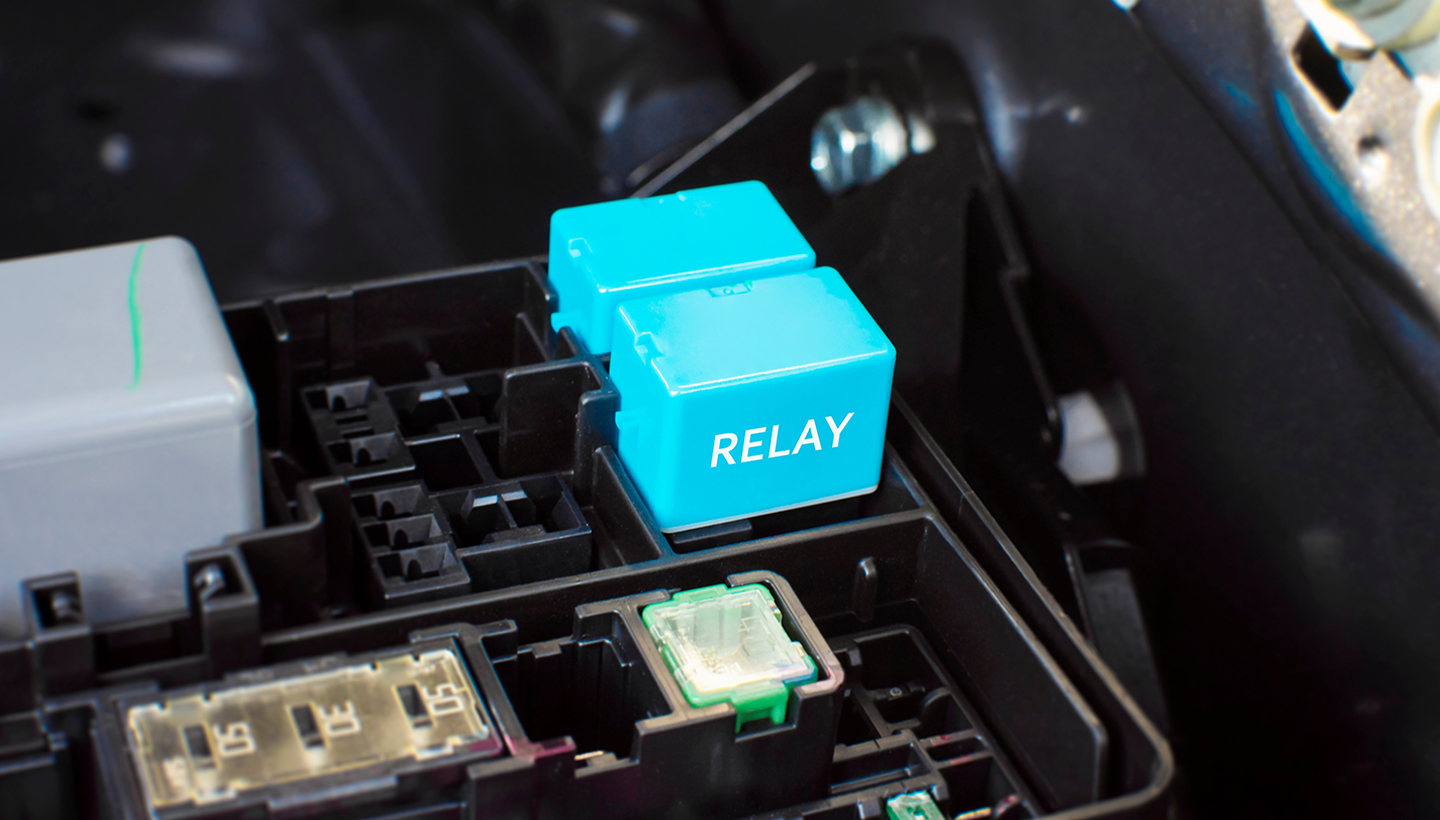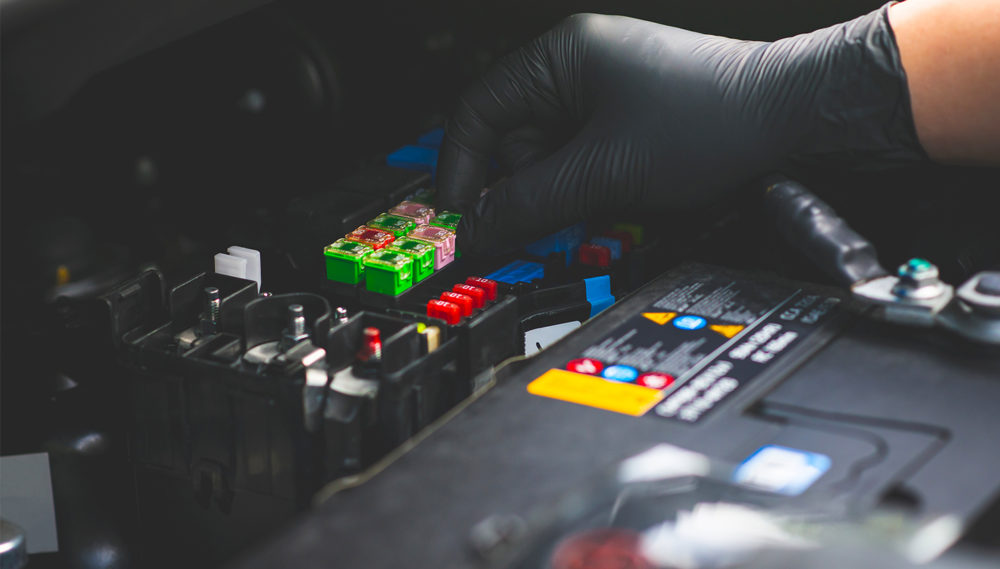
The relay in a car is an essential electrical component that greatly supports the electrical performance of the vehicle. This relay is an electrical component that consists of two parts: the coil and the contacts.
Every car today is equipped with relays to streamline the flow of electrical currents. This reduces the resistance in the car's electrical system, making it more efficient. As a result, the car's electrical system can be delivered more effectively.
Until now, relays in cars served many significant functions. They enhance the brightness of car lights and contribute to the longevity of the car's sacred components, ensuring durability in usage.
How Car Relays Work
Before utilizing car relays, it's imperative to comprehend their functioning to avoid errors in selection and application. Relays consist of several terminals, which are 30, 85, 86, and 87. The electrical current flow in the relay passes through terminals 85 and 86 towards the coil.
The coil induces magnetism to attract the contractor. The resulting magnetic current flows from terminal 30 to terminal 87. This relay performance repeats, ensuring an unobstructed electrical current flow. Adding relays to cars enhances the smooth flow of electrical current while also safeguarding electromagnetic components from premature damage.

Functions of Car Relays
In general, car relays serve the purpose of controlling and directing electricity. Here's a detailed overview of the functions of car relays:
-
Protecting Switches
Baca Juga
Car relays extend the lifespan of switches by preventing them from overheating. This protection ensures that combination switches in the car don't heat up quickly. The consequence of this relay protection is that car light switches won't melt due to excessive heat.
Car relays typically require a substantial electrical current to function optimally. The electrical current after relay installation flows through the switch. The relay switch serves as a means of generating electrical current.
This current is then directed to the AC compressor, car lights, and other electromagnetic components. In this regard, the relay functions to ensure that the switch remains durable and functional for an extended period.
-
Brightening Car Lights
Adding relays to cars enhances electrical current strength, reducing resistance. This results in brighter car lights as the electrical current can flow optimally, providing maximum brightness.
-
Minimizing Resistance
Electrical resistance in cars affects the performance of electromagnetic components. Hindered electrical current can lead to dim car lights. Additionally, electrical resistance can cause the car horn to sound weak.
Additional components, like relays, can be used to minimize electrical resistance. Relay installation shortens the circuit, ensuring a minimal reduction in electrical current. This optimized electrical current is then directed efficiently to components like the horn and car lights.
-
Car Locking Mechanism
Another function of relays is to serve as a locking mechanism in cars. This locking mechanism aims to secure the electrical current in the vehicle. Relays play a role in automatically connecting and disconnecting electrical current.
-
Electromagnetic Switch
Baca Juga
The purpose of the electromagnetic switch, or so-called relay switch, is to control the electrical magnet. Car relays can generate magnetic force through the coil, which is passed by an electrical current.
The magnetic force generated by the relay coil will connect terminals 30 and 87. This happens because the magnetic force on the relay coil pulls at the contact point. This pull makes both terminals connect automatically.

Types of Car Relays and Their Functions
As of now, there are several types of car relays, and the type to be installed should be tailored to the car's specifications to avoid unnecessary strain. Here are the types of car relays:
-
3-Pin Relay
The 3-pin relay has three terminal components—30, 86, and 87. Terminal 30 has two terminals: 85 and 86. These three terminals interconnect to facilitate the flow of electrical current.
-
4-Pin Relay
The 4-pin relay is the basis of a single-load electrical circuit for fog lamps and horns. Power from the 4-pin relay can function to control the switch from terminal 85. The 4-pin relay is more comprehensive and can conduct electrical current more efficiently to the horn and lights.
-
5-Pin Relay
The next type of car relay is the 5-pin relay. In this 5-pin relay, there is an additional terminal, namely 87a. The function of the additional terminal 87a is to provide an output to run a circuit with a double load on a single relay.
A 5-pin relay can be useful for controlling the electrical current to the headlamp or stop lamp. Additionally, a 5-pin relay can better prevent obstacles in the electrical current. The additional terminal also makes the relay's performance more efficient.
-
8-Pin Relay
The last type of car relay to be aware of is the 8-pin relay. The 8-pin relay can provide two instructions at once to one switch to execute electrical commands. However, the 8-pin relay is rarely used due to varying vehicle needs.
Causes of Car Relay Damage
Car relays can experience damage due to specific causes. Generally, there are two common reasons for car relay damage:
-
Coil Damage
This damage can occur due to a broken coil or a short circuit, which may arise because the insulation layer of the relay peels off, causing current to escape from the coil.
If this issue occurs, the solution is to replace the relay coil with a new one. However, since replacing the coil alone can be quite complicated, people often prefer to replace the entire relay at once.
-
Platinum Damage
This damage is caused by the contacts that frequently experience intermittent electrical flow. However, it can also occur due to poor product quality, making it susceptible to damage.
So, that's an explanation of the function of the relay in your car and how it works to ensure optimal performance. Make sure to regularly service your car so you can identify any damage to the car's relay before it's too late!
SHARE:






















